Industry Outlook: Nonprofits (2017)
Leaders from Utah nonprofits discuss the impact of the Trump Administration on their organizations, as well as the value they bring to the business community and their efforts to increase diversity among their staff and board members.
PARTICIPANTS:
Andrea Alcabes, I.J. & Jeanne Wagner Jewish Community Center
Shandra Benito, Art Access
Mona Burton, Holland & Hart, LLP
Denni Cawley, Utah Physicians for a Healthy Environment
Chris Conard, Playworks Utah
Andrea Cox, Refugee & Immigrant Center
Sarah Farr, RiteCare of Utah
Janet Frasier, Girl Scouts of Utah
Blair Hodson, Rocky Mountain Innocence Center
Chandler Jordana, Comunidades Unidas
Vicki Mann, 90.9 FM KRCL
Kate Moss, Susan G. Komen Utah
Kelly Riding, Utah Afterschool Network
Diane Hartz Warsoff, Community Development Corporation of Utah
Crystal Young-Otterstrom, Utah Cultural Alliance
 A special thank you to Kate Rubalcava, CEO of the Utah Nonprofits Association, for moderating the discussion.
A special thank you to Kate Rubalcava, CEO of the Utah Nonprofits Association, for moderating the discussion.
Since the new administration and the new political climate, have you seen any changes in donations, fund-raising, volunteering or demand for services?
WARSOFF: It’s a little early because there’s so much uncertainty. We depend a great deal on federal funding. We receive funding through HUD. We get our recipients from the CDBG and home grants, and that underwrites a lot of the work that we do. Plus we get direct funding for our home ownership council.
Even though we haven’t seen a significant change yet because the 2017 budget was approved with fairly flat allocations for those programs, we are prepared, particularly in Utah and particularly for HUD, because we have two senators that are fairly high up in the committees that would make those decisions. And I have already been working with other housing groups. So some of our partnerships have strengthened. We have spoken to our other funders. We are primarily funded through banks and other financial corporations. And we have given them a heads-up. We have let them know that this is something we are afraid could come down the pike and impact us. Funding has been kind of creeping down over the years anyway.
The key for us is being prepared now, because we are not sure what it’s going to look like. All the congressmen say this budget is dead on arrival, but we don’t know what that means in terms of what they will change.
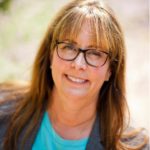 MANN: KRCL has fund drives primarily in the fall and spring, and our most recent drive was our most successful ever. I do feel that has everything to do with what’s going on in Washington. We may lose Corporation for Public Broadcasting money, so we have hired a director of philanthropy, which we have never had before, so we can potentially make up the money that we will lose if the CPB money goes away.
MANN: KRCL has fund drives primarily in the fall and spring, and our most recent drive was our most successful ever. I do feel that has everything to do with what’s going on in Washington. We may lose Corporation for Public Broadcasting money, so we have hired a director of philanthropy, which we have never had before, so we can potentially make up the money that we will lose if the CPB money goes away.
But people feel we are an important institution in the market, so they have really stepped up. And so it’s actually been good news, but cautionary. We are waiting to see what happens in the future.
YOUNG-OTTERSTROM: Because our federal cultural entities are under threat, it has invigorated our members to become stronger advocates. It has strengthened our position as lobbyist for our senator and really helped us move into a new frame of business and activity with our elected officials. We were in DC lobbying. And our federal meetings usually aren’t that great, actually, but this time they were really good. When there’s actual, real threats to our sector, it does help buoy support elsewhere.
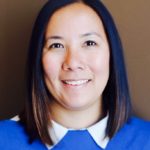 CAWLEY: The environment has been very much in the news—how we are going to see a lot of funding get cut. The state relies on this, and we are going to see head count being reduced and research funding being reduced.
CAWLEY: The environment has been very much in the news—how we are going to see a lot of funding get cut. The state relies on this, and we are going to see head count being reduced and research funding being reduced.
But what we see on the individual side is this passion that is coming out from people. “I want to do something,” whether it’s volunteering or donating. And we have been relying a lot on individual donations. I tried something different since joining UPHE last year: I tried to apply for federal grants from the EPA Environmental Justice office, but now we are not sure if these grants will even be there because we think the whole Environmental Justice office may not exist.
So I think right now it’s the individuals and other groups who will step up. We have seen more engagement from the business sector and also from the local government, to see how they can fill that gap.
FRASIER: Girl Scouts started in 1917, which was a time of great social transition and revolution. And what keeps us going right now is, now more than ever, we believe that in strengthening girls you strengthen homes, and in strengthening homes you strengthen communities. We are part of that. We are back to our grassroots and finding girls and families really responding to that at this moment in time. Maybe it’s the positive outcome of the kind of regretful journey that got us there.
 BENITO: I think there is an increased sense of community within organizations—we are coming together in a way that is a little more urgent. But I do want to speak to some of the needs that we are seeing in the community in terms of what the political climate has created. And one is there’s a lot of hate going on in the world right now and it’s becoming, in certain places, more socially acceptable to voice that. And there’s a lot of fear by marginalized communities of women, of Muslims, of immigrants and refugees here. And because we are dedicated to serving marginalized communities, there is more fear and a heaviness.
BENITO: I think there is an increased sense of community within organizations—we are coming together in a way that is a little more urgent. But I do want to speak to some of the needs that we are seeing in the community in terms of what the political climate has created. And one is there’s a lot of hate going on in the world right now and it’s becoming, in certain places, more socially acceptable to voice that. And there’s a lot of fear by marginalized communities of women, of Muslims, of immigrants and refugees here. And because we are dedicated to serving marginalized communities, there is more fear and a heaviness.
As an arts organization, we work to promote access to the arts for people with disabilities and other marginalized people. There are fundamental needs that people are afraid for right now. Housing, whether they will still have healthcare next year. When those basic necessities become unstable, it becomes harder to engage in things like self-expression, to have high self-esteem, to be able to play. How do we create space for people to do that while also recognizing that this is a scary time for people and that there are basic needs that feel uncertain to people?
 RIDING: There’s a large portion of after-school funding that is supposed to be eliminated in the school budget. So it has roused people to share the impacts and the data and the importance of after-school programs.
RIDING: There’s a large portion of after-school funding that is supposed to be eliminated in the school budget. So it has roused people to share the impacts and the data and the importance of after-school programs.
So we are trying to flip it and make it more positive.
How can we collaborate more with businesses? What do businesses need to know about nonprofits and ways that they can engage?
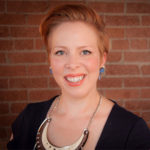 YOUNG-OTTERSTROM: For the cultural sector, we’d like to be seen as businesses, as cultural businesses. We are employers, we are contributing to the economy, our patrons are going out to dinner and tourists are staying in hotels. Utah has an incredible cultural community that is on par with anything that you can find in New York or L.A. or San Francisco.
YOUNG-OTTERSTROM: For the cultural sector, we’d like to be seen as businesses, as cultural businesses. We are employers, we are contributing to the economy, our patrons are going out to dinner and tourists are staying in hotels. Utah has an incredible cultural community that is on par with anything that you can find in New York or L.A. or San Francisco.
In terms of increased partnership, there are a lot of movements nationally for bringing cultural organizations into for-profit businesses during the work day to work with them on increasing their creativity or their workplace culture. Maybe creating pottery during the work day or learning an instrument or dancing or listening to a poet or a writer, or learning how to practice those skills and grow those skills. We would like to see Utah’s businesses really embrace programs like this.
But a big negative we see is corporate philanthropy for the cultural sector has really gone down the tubes big time. We used to have stalwart corporate donors who aren’t there anymore. In the cultural sector, it’s really going away. Thankfully that money has been replaced, in a lot of other areas. But we would like to invite businesses to renew their investment in culture.
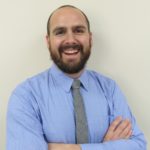 CONARD: The common theme from the first question was that the arts are going to be cut and the after-school programs are going to be cut and education is going to be cut. And if all of that is going to happen for a business-first policy, then businesses are going to have to start reinvesting in the community or the community is going to fail.
CONARD: The common theme from the first question was that the arts are going to be cut and the after-school programs are going to be cut and education is going to be cut. And if all of that is going to happen for a business-first policy, then businesses are going to have to start reinvesting in the community or the community is going to fail.
It’s good business to do good while doing well. And the more businesses invest back into strengthening their own communities where their employees live and work and thrive—that shift of dollars has to happen if we are going to lose all this funding, because it’s national public policies that make businesses stronger.
 WARSOFF: As nonprofits, we want to be viewed as professional businesses. But for many of us, we cannot be self-sufficient because of the way our programs are structured, by default. For example, we provide counseling for free. And if we started charging, many of our clients wouldn’t be able to come, or the amount we could charge would never cover the cost of administering that program.
WARSOFF: As nonprofits, we want to be viewed as professional businesses. But for many of us, we cannot be self-sufficient because of the way our programs are structured, by default. For example, we provide counseling for free. And if we started charging, many of our clients wouldn’t be able to come, or the amount we could charge would never cover the cost of administering that program.
So we want to be viewed as professional, with the understanding that self-sufficiency for some of us is somewhat of a myth because the service we provide would not work in the open market. There’s a balance there: We don’t want to be beggars, but we want to show the added value that is nonmonetary that is a benefit to businesses.
CAWLEY: Recruitment is hard, because of air quality here—that is a theme we hear from business partners. So education is another partnership piece where we see industry really playing a role. We like to go into the businesses and talk about what their employees can do to protect air quality or what they can do to protect themselves from bad air. But really it’s getting that message to your employees and to their families that can help create more support for vibrant culture, for better housing and healthy communities, and that’s the kind of partnership that I hope to develop more.
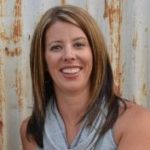 FARR: As nonprofits, it is our job to go out into the community and educate businesses on our mission. It’s difficult for a business to engage in our mission if they don’t know. If I’m able to talk to a business about lower graduation rates and what happens to children who don’t graduate from high school, how many of our kids who end up without speech and language services end up in prison—and there are sad statistics on that—but if I’m able to get in front of a business and communicate that, it draws engagement. So that’s my responsibility to get in front of them.
FARR: As nonprofits, it is our job to go out into the community and educate businesses on our mission. It’s difficult for a business to engage in our mission if they don’t know. If I’m able to talk to a business about lower graduation rates and what happens to children who don’t graduate from high school, how many of our kids who end up without speech and language services end up in prison—and there are sad statistics on that—but if I’m able to get in front of a business and communicate that, it draws engagement. So that’s my responsibility to get in front of them.
But it’s also the responsibility of the business to create the platform for that. I cannot call a business and say, “Hey, I’m a really great nonprofit with an amazing mission. Can I come talk to you guys?” That’s not realistic. So I think it’s the responsibility of a business to create a platform in which nonprofits, especially smaller ones like me, can communicate.
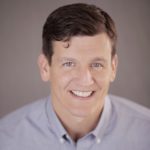 HODSON: The onus is on the nonprofit sector to educate and communicate the value that we bring to the community to those businesses. It’s not a situation where we will end up meeting in the middle. We need to do the outreach necessary to create the partnerships.
HODSON: The onus is on the nonprofit sector to educate and communicate the value that we bring to the community to those businesses. It’s not a situation where we will end up meeting in the middle. We need to do the outreach necessary to create the partnerships.
BENITO: When we are talking about social issues, when we are talking about issues of inequality, it’s a communal responsibility. Talking about all of the issues isn’t just our organizations’ and our group of funders’ responsibility. It is up to all of us. If we are going to solve the social issues we are working on here, it’s a responsibility of everyone.
Reworking some of the ways we talk about nonprofits and the way we talk about businesses will allow us to come together and say, “You know what? This is a shared responsibility.” And make it easier to go into the doors of businesses and make a presentation. But right now, sometimes nonprofits get the burden of responsibility: “It’s your job to do this.” But really, we are just here to facilitate the social change that needs to happen, so that everyone can really have full access to all of the things that we deserve.
Research shows that Millennials highly value the opportunity to make an impact in their communities and are more likely to have loyalty to their jobs if they provide those opportunities. So how can businesses partner with nonprofits to engage their employees in those efforts?
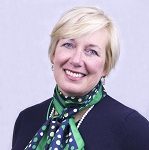 FRASIER: Our biggest advocates are the Millennials moving into the workplace and rising in leadership. Because of the healthy economy, the whole dynamic around workplace engagement and longevity, all those paradigms have shifted. So we have an opportunity to flip the script and let the demands of the Millennials in the workplace be the advocates for where we should be. I don’t know how we are going to do that, but it feels like there’s an opportunity there.
FRASIER: Our biggest advocates are the Millennials moving into the workplace and rising in leadership. Because of the healthy economy, the whole dynamic around workplace engagement and longevity, all those paradigms have shifted. So we have an opportunity to flip the script and let the demands of the Millennials in the workplace be the advocates for where we should be. I don’t know how we are going to do that, but it feels like there’s an opportunity there.
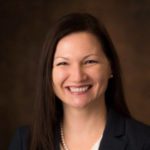 MOSS: Engage Millennials as your advocates. That helps bring those partnerships together with the organizations they work with. When you have somebody that is a volunteer for your organization that’s an advocate for you, if they work for a corporation they are a big voice to get you corporate sponsorship and to get other volunteers and get their co-workers involved.
MOSS: Engage Millennials as your advocates. That helps bring those partnerships together with the organizations they work with. When you have somebody that is a volunteer for your organization that’s an advocate for you, if they work for a corporation they are a big voice to get you corporate sponsorship and to get other volunteers and get their co-workers involved.
MANN: Corporate responsibility is a really big deal for Millennials and they don’t just want to spend their money doing something, they want to act. And they can make a difference in the corporate world. They can shift ideas; they help us get partnerships with the business world. I see that every day.
MOSS: We are hearing from organizations that say, “We will consider funding you, if you have a certain amount of volunteer hours from our employees. Our employees need to care about this, they need to be vested, and then we will talk cash.”
BENITO: I’m a Millennial. And the first thing I want to say is that it’s not like the Millennials just woke up and said, “You know what? We want to change the world.” It’s our parents’ generation that instilled that in us. I grew up with my dad talking about going to anti-Apartheid protests and being arrested and going to anti-Holocaust protests. A lot of us grew up with those narratives from our parents.
Also, corporate giving and engagement can be really good in terms of a benefits package. For example, we have a policy where you can, every month, have up to four hours of paid time for going to social justice and advocacy events, because then they bring that information back and it’s really beneficial to us. And it expands our reach in the community. What if businesses said to every employee, you can attend two fundraisers a year and we will pay for your tickets—what a cool benefit that would be. And also a way to get your employees out into the community spreading the word. There’s a lot of ways to do it other than the traditional grant program or having people from the office come volunteer. There’s a lot of ways that would make it fun and exciting and feel like a benefit for employees.
CONARD: There’s been research around healthy corporate culture and organizational culture and what drives that. And what they have found is that, particularly in the Millennial generation, people are looking for three things out of their jobs: They are looking for mastery of skill, they are looking for a strong community and they are looking for something that is meaningful. And the nonprofit world is interesting because we can often give folks meaning out of their work. A lot of us can give a strong community. And then we place seven hats on them, so mastery of skill goes down or gets diluted.
On the corporate end, they thrive on mastery of skill, maybe on community, and then they are looking for where can they fill the gaps with meaningful work. So the more that the social impact industry and the corporate industry can merge, more workers in the corporate world can find true meaning in community whereas the social impact world can then help to develop our own people on mastery and create a workforce where all three of those factors are thriving. And by virtue of that, nonprofits will thrive and businesses will be more successful.
How are your organizations addressing diversity, either within your workforce, with the clients you serve, or within your mission.
YOUNG-OTTERSTROM: If this room is endemic of the non-profit sector, probably you all have an issue—I know we do—where I look for men to serve on our board to provide diversity. Because we strive to be a statewide organization, we do work really hard at making sure our board is representative of Utah’s geography, Utah’s racial profiles, Utah’s economic diversity. That is really our number one thing we look for when the board decides who we are going to invite onto the board.
But I’ll be real. In Utah it’s hard to always be as diverse as we can be, because there’s not as much diversity as we need to have. So a lot of us have a lot of the same people rotating around our boards because they are interested and involved in service. We are always looking for how we can do better.
MOSS: It’s a philosophy of mine to provide diversity in the workplace, because if everybody comes from the same background, you are not going to get any new ideas. So I try to make sure we have employees and board members and volunteers from a wide variety of spectrums: people who are born here or who are immigrants here and not of the dominant faith, and some that are of the dominant faith—which has also been an issue historically for some of our organizations, is shutting out the local culture. I want to make sure that there are places for everyone, including men.
FARR: We struggle to engage the rural communities of Utah. Both with the population we serve as well as our board members, engaging that demographic has been a focus of mine. There’s an old way of thinking that for a board meeting everybody has to be sitting at the same table. We have talked a lot about doing online meetings. But it’s easier for us to bring people into the boardroom electronically than to service that rural population. We have a significant population of children who aren’t being served in Vernal. Their one and only speech pathologist just retired. So we have an entire community of children who are not being serviced at all. I don’t have a solution, but an area of diversity for us is engaging the rural population of Utah.
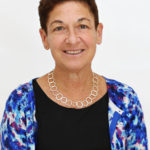 ALCABES: Our staff has been good at taking individuals who were our clients at one point, cultivating and servicing them and actually bringing them in as part of the staff and building up the system. I have never worked at a more diverse place than where I am right now.
ALCABES: Our staff has been good at taking individuals who were our clients at one point, cultivating and servicing them and actually bringing them in as part of the staff and building up the system. I have never worked at a more diverse place than where I am right now.
But the messaging has systemically biased what a CEO is and looks like, whether it is subconsciously or not. I worked for two nonprofits where that’s not what the CEO looks like, and I have seen the different interactions that may be subconscious. But it isn’t OK and it’s still a systemic fight. That messaging needs to change. So what we think a CEO or board member looks like isn’t a token representative. It is meaningful. They bring so much to this; having the opportunity to work with a very diverse staff I can see the difference that every skill set brings.
It has channeled my bias of what does a CEO or CFO look like. It is a different approach and it makes me think differently of how I select those. Especially the board member, where I want the community represented and not just the donors represented. Sort of that mix of both. When you have a community represented and then donors there, then you are integrating something. You are changing the message.
 JORDANA: Nonprofits face unique challenges with diversity: You won’t find, in many cases, them saying, “We are actively looking for men on a board.” But almost all of our staff volunteers and interns are minority women. So believe it or not, if a white male came and applied at our organization it would be out of the ordinary, definitely. I’m the only person that works there that is not Latino. Our clients are almost exclusively Latino. So we would love to include not only other minorities but the mainstream populations in our work, too.
JORDANA: Nonprofits face unique challenges with diversity: You won’t find, in many cases, them saying, “We are actively looking for men on a board.” But almost all of our staff volunteers and interns are minority women. So believe it or not, if a white male came and applied at our organization it would be out of the ordinary, definitely. I’m the only person that works there that is not Latino. Our clients are almost exclusively Latino. So we would love to include not only other minorities but the mainstream populations in our work, too.
WARSOFF: The difficulty is that our staff reflects our population, but it’s hard to find board members that reflect the diversity. A lot of our funders are on the board. They are all white guys, and that’s not the population we serve, that’s not what our staff looks like. But it’s extremely difficult to find board members from minority communities because, first of all, everybody wants a leader. And sometimes it’s like, “No, mid level is good. I want somebody that is going to work.” But a lot of the people that represent minority communities, because their minority community here is smaller than elsewhere, they are already on six boards.
BENITO: When you look at resumes for people you are going to hire, are you simply looking for people with professional experience? Or can we go beyond that and say, “Do you have experience caring for other people? Do you have experience organizing your community?” Not necessarily as a professional job. Not necessarily through a master’s degree. That is the kind of shift that is going to have to happen for us to really say that in 10 years we could look around this room and it would look a little different. And part of that means white women, myself included, looking to step away from these roles and instead saying, “Who are we pulling up? Who can we bring up?”
YOUNG-OTTERSTROM: When we realized we really had a lack of diversity problem, we were super female, super white, super Salt Lake City. We knew it would take multiple years, and it’s still ongoing, but we went to places that we weren’t serving and we listened to what they wanted. And we said, “Who are the leaders in your community that we can bring into our organization?” A lot of it can start by going out and hearing what people want. Because it might be really uncomfortable to be the one person of color on a board, and how are you working to make sure that they feel comfortable on your board or make sure that they are not alone?
WARSOFF: Except I think minorities feel like that anyway in this state. I’m not a visible minority but in Utah I’m a minority. I have had people say I’m the only Jewish person they know. It’s a different perspective, but I understand that feeling. When we are looking for minority representation, it seems like it’s the same people that keep getting asked. And we need to drill deeper into those communities so that we are representing the people who we serve.
ALCABES: I want to build on the idea of skill set and how we hire and look at resumes. It plays into diversity and all these things. As a resume is set up, we look at professional experience and skills and education and start making decisions on whether to even interview. What I have noticed is when I start to understand what their narrative is they are bringing, that can help diversity as well.
For example, when I have a conversation with someone and learn that they immigrated here with their parents, they are fluent in two or three languages, they are the oldest and had to take care of siblings and go to school, and they graduated from college, and they are the first to graduate, that is telling me something about your character and personality and ability to work. Because you had to take care of your family and live at home, it took you longer. You couldn’t do the internship because you had to get paid and have a job, but there’s something about you now that I know your value. But how do you represent that?
It’s a good point to change how we identify the skills that we really care about. You’ve got this great list, but if you’re not a team player or haven’t had life experiences where you have had to collaborate and sacrifice and make a hard choice between good, better and best—I want the person that comes with those experiences. And that is now an advantage instead of a disadvantage. The way it is set up now it’s a disadvantage because you can’t do a lot of things because you are learning a language, taking care of your parents and trying to graduate college.
So it would be great to see a change in the system. And it would be incredible to see who bubbles up to the top. Turnover goes down, and there’s a commitment, and you gave someone a chance. And I think they will rise to the occasion because they have demonstrated they can do that. You have to find out how to know that.
FRASIER: It’s important to just really own up to the deep implicit bias. What are the paradigms and implicit biases that are keeping people from coming to the door, and how committed are we to just scrub those out of the system? We are changing our staff so that we can focus on the true rural as a category; instead of bringing what we think is important, we need to visit them and start asking, “What do you need here and how can we help you close that gap,” and not even think that we can bring it but could we help connect it with a local business.





